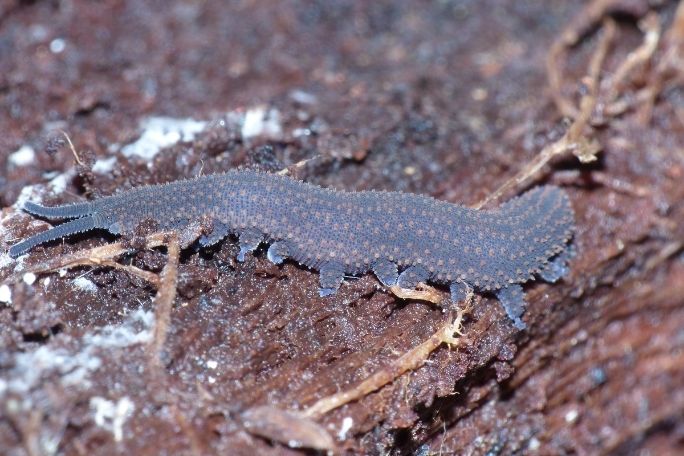Lesson summary
Students will create artworks based on the Bush Blitz species and the habitats in which the species live. They begin by creating a 3D model of one species before applying their learnings from this activity to create a 2D scientific drawing. This drawing can then be incorporated into a display in the classroom or school as a mural.
Learning intentions:
Students will...
- recognise microhabitats in the schoolyard and identify the animals that live in them
- understand that you can use both 2D and 3D techniques to visually communicate scientific findings
- observe visual detail of bush blitz critters as they apply technique and process to their drawing/painting/modelling
- explore and experiment with visual conventions (line, shape, colour and texture) to apply observation of their animal species.
Success criteria:
Students can...
- work independently and collaboratively
- use visual art and scientific terminology
- draw a scientific drawing
- describe why a horizon line helps our landscape picture have depth
- blend a landscape background.
Lesson guides and printables
Lesson details
Curriculum mapping
Australian Curriculum content descriptions:
Year 5 English:
- use appropriate interaction skills including paraphrasing and questioning to clarify meaning, make connections to own experience, and present and justify an opinion or idea AC9E5LY02
- Plan, create, rehearse and deliver spoken and multimodal presentations that include relevant, elaborated ideas, sequencing ideas and using complex sentences, specialist and technical vocabulary, pitch, tone, pace, volume, and visual and digital features (AC9E5LY07)
Year 5 Science:
- Examine how particular structural features and behaviours of living things enable their survival in specific habitats (AC9S5U01)
- Write and create texts to communicate ideas and findings for specific purposes and audiences, including selection of language features, using digital tools as appropriate (AC9S5I06)
Year 6 English:
- identify responses to characters and events in literary texts, drawn from historical, social or cultural contexts, by First Nations Australian, and wide-ranging Australian and world authors (AC9E6LE01)
Year 6 Science:
- Investigate the physical conditions of a habitat and analyse how the growth and survival of living things is affected by changing physical conditions (AC9S6U01)
- Write and create texts to communicate ideas and findings for specific purposes and audiences, including selection of language features, using digital tools as appropriate (AC9S6I06)
Years 5 & 6 Visual Arts:
- explore ways that visual conventions, visual arts processes and materials are combined to communicate ideas, perspectives and/or meaning in visual arts across cultures, times, places and/or other contexts (AC9AVA6E01)
- select and present documentation of visual arts practice, and display artworks in informal and/or formal settings (AC9AVA6P01)
Syllabus outcomes: EN3-8D, EN3-1A, ST3-10LW, ST3-4WS, ST3-11LW
General capabilities: Critical and creative thinking, Literacy
Cross-curriculum priority: Sustainability
Relevant parts of Year 5 English achievement standards: Students contribute actively to class and group discussions, taking into account other perspectives
Relevant parts of Year 5 Science achievement standards: Students analyse how the form of living things enables them to function in their environments. Students communicate their ideas and findings using multimodal texts.
Relevant parts of Year 6 English achievement standards: Students contribute actively to class and group discussions, using a variety of strategies for effect
Relevant parts of Year 6 Science achievement standards: Students describe and predict the effect of environmental changes on individual living things. Students construct multimodal texts to communicate ideas, methods and findings.
Relevant parts of Year 5 & 6 Visual Arts achievement standards: Students use visual conventions and visual arts practices to express a personal view in their artworks. They demonstrate different techniques and processes in planning and making artworks.
This lesson is part of the wider unit of work Backyard Bush Blitz – Years 5 & 6
Resources required
- A1 colouring paper (to form the background for a classroom mural)
- Bush Blitz Slides
- Clipboard
- Devices capable of accessing the internet
- Paint
- Paintbrushes
- Paper
- Pencils
- Plasticine/clay/playdough (enough for each student)
- Scientific Drawing Guidelines
Skills
This lesson is designed to build students’ competencies in the following skills:
- Communication
- Creativity
- Critical thinking
- Cultural understanding
Additional info
Time required: 3 hours 15 mins (over several lessons)
Level of teacher scaffolding: High – creating the resource/background habitat between classes
This is an original Cool+ lesson.


Welcome back!
Don't have an account yet?
Log in with:
By signing up to Cool.org you consent and agree to Cool's privacy policy to
store, manage and process your personal information. To read more, please see
our privacy policy here(Opens in new tab).
Create your free Cool.org account.
Many of our resources are free, with an option to upgrade to Cool+ for premium content.
Already have an account?
Sign up with:
By signing up to Cool.org you consent and agree to Cool's privacy policy to
store, manage and process your personal information. To read more, please see
our privacy policy here(Opens in new tab).